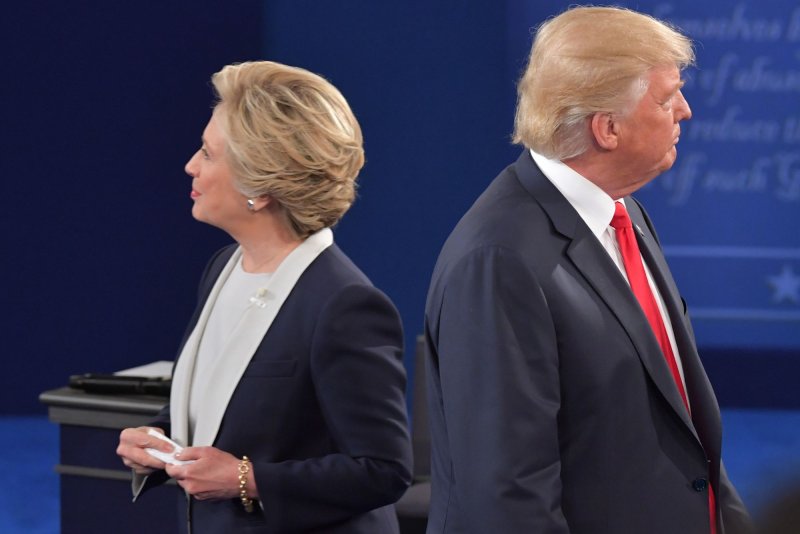Presidential candidates Hillary Clinton and Donald Trump attend a debate at Washington University in St. Louis, Mo., on October 8, 2016. File Photo by Kevin Dietsch/UPI |
License Photo
June 5 (UPI) -- The Russian effort to interfere in the 2016 U.S. presidential election was better planned and more advanced than previously believed, a new cybersecurity analysis said Wednesday.
Software developer Symantec conducted the study and examined nearly 10 million Twitter posts -- made by Russia's Internet Research Agency -- that sought to influence the vote. The U.S. intelligence community and numerous experts have said the firm, often referred to as a "troll factory," made great efforts to favor then-candidate Donald Trump during the 2016 campaign.
The analysis concluded that the Russian efforts sought to stoke tensions across the U.S. political spectrum, and listed some of the most popular Russian-linked accounts -- which posted about various issues, including the Black Lives Matter movement, gun rights and feminism.
Gillian Cleary, a senior software engineer at Symantec, said the campaign's sophistication suggests it was run by higher Russian powers.
"It was a highly professional campaign," Cleary said in the report. "Aside from the sheer volume of tweets generated over a period of years, its orchestrators developed a streamlined operation that automated the publication of new content and leveraged a network of auxiliary accounts to amplify its impact.
"The sheer scale and impact of this propaganda campaign is obviously of deep concern to voters in all countries, who may fear a repeat of what happened."
The report said accounts went beyond Internet fodder and inspired some to attend rallies promoted by the Russian accounts. One account promoted 47 rallies for Republican nominee Trump, it noted.
Other key findings:
- Many accounts were created long before the 2016 election, and the average time between the start of the account and its first post was 177 days.
- A core group of main accounts "masqueraded" as legitimate news outlets or political organizations.
- Most Russian-linked accounts were automated, or "bot" profiles, which occasionally showed manual intervention to tweak information like the tweets' wording in an effort to "appear more authentic."
- The most retweeted account attracted 6 million retweets -- many of which were retweeted by genuine Twitter users.
- Some accounts were making money on the side, by monetizing URL shorteners to create links to the posts. The effort generated hundreds of thousands of dollars.















